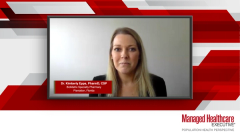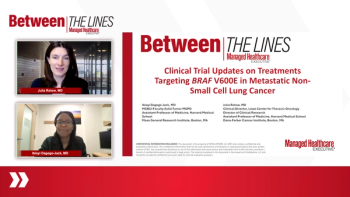Understanding Gene Therapy for Hemophilia A: Patient Candidacy, Challenges, and Uncertainties
The potential benefits and uncertainties surrounding gene therapy include its curative potential, the need for immunosuppression, ongoing care needs, and a lack of long-term data.
Episodes in this series
Jonathan Roberts, MD: Now, as we’ve discussed a little bit about gene therapy being a possibility, who may be a candidate for gene therapy, and what do clinicians and patients need to know about it? With the currently available gene therapy for hemophilia A it’s important to know that ultimately patients and clinicians recognize that it’s not necessarily 100% curative. The difficulties with gene therapy currently is knowing what that therapeutic window is going to be for a particular patient and what level of factor VIII expression can they expect to get. We can give them the data from the clinical trials and say this percentage of patients was here, this percentage of patients was here, based on the dosing that you’re getting. You know, this is what we can expect and this is the likelihood of what your level will end up at. But we still don’t know the durability over time. I mean, the recent data from ISTH [The International Society on Thrombosis and Haemostasis] on gene therapy for hemophilia A there’s a slowing of factor VIII and a decline over time. But we don’t know if that will eventually stop or if there will be an inevitable continued decline that patients may be in the normal hemostatic range for a year or 2 and then they drift down into the mild range and then eventually, do they completely lose expression? These are unknowns. These are things that patients and clinicians have to be willing to accept if they’re going to be a candidate for gene therapy. Also, the need for immunosuppression, needing some form of immunosuppression, typically steroids early on so that the gene therapy product can actually go to the hepatocyte and start to make factor VIII. That can also take time and that can be variable. So basically a therapy that’s supposed to reduce the treatment burden early on there’s going to still be a lot of health care needs and monitoring very early on, and lots of laboratory monitoring after the initial gene therapy infusion. From an infusion standpoint, it’s pretty straightforward. It’s a one and done. But some of the long-term ramifications of that, we still don’t know. And, thankfully from the human data and animal data to date, we don’t think that the integration to potential malignant transformation, that risk isn’t there. We’ve not seen that. But we don’t know, right? We don’t have 20 years of data on someone with hemophilia A who’s had gene transfer to know what their long-term outcomes are. So as long as you have an open discussion with a patient, I would also advocate for more than 1 discussion. I think there needs to be many. Certainly, our center is a site that can administer gene therapy and onboarding educational program for a patient to understand what they’re getting into and what some of the unknowns are and also be comfortable with the fact that if they eventually lose expression, they would need to go back to one of the other therapeutic options that’s available or may be available at that time.
Transcript edited for clarity.
Newsletter
Get the latest industry news, event updates, and more from Managed healthcare Executive.






















































